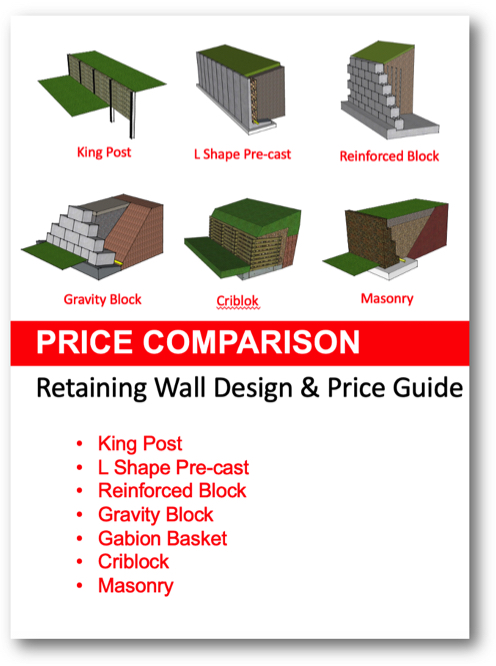The Best Guide To Ace Construction Company
Table of ContentsNot known Facts About Ace Construction Company AustinWhat Does Austin Construction Company Do?10 Simple Techniques For Construction Company AustinAustin Construction Company Things To Know Before You Get This
Because these products can not resist appreciable tension, the design focuses on avoiding tension in the wall. Some gravity walls do not use mortar, relying solely on their weight to remain in location, as in the case of dry stone walls. These walls typically are trapezoidal in area as displayed in Fig.
2. Gravity walls need heavy foundation due to the plus size of the wall. They are cost-effective and appropriate for just small heights. A gravity keeping wall supplied with a percentage of reinforcement for reducing the mass of the concrete is referred to as semi-gravity keeping wall, as displayed in Fig.
3. The lateral earth pressure is principally resisted by the mass of the wall, as in the case of a gravity maintaining wall. These are the enhanced concrete walls in which lateral earth pressure is resisted by structural action of its members. The base of the wall is extended into the backfill on the heel side and is referred to as heel piece, as shown in Fig.

Not known Facts About Ace Construction Company
The heel piece and the toe slab are subjected to resultant upward soil pressure from the bottom and bend up. Reinforcement is therefore offered on the stress side, that is, vertically on the behind of the stem and horizontally at the bottom of the heel piece and the toe slab.
Cantilever maintaining walls appropriate for maintaining the backfill to moderate heights of 4-7 m. In sample, the majority of cantilevered walls look like "L" s or inverted "T" s. austin construction company. Where foundation soils are bad, earth tieback keeping walls are another choice. These walls are counterbalanced not only by a big base however also by a series of horizontal bars or strips extending out from the vertical surface into the backfill.

16. 5. The stem and the heel piece act as constant pieces spanning horizontally along the length of the wall between the counterforts. Using counterforts lowers the Ace Construction Company flexing moment due to earth pressure and thus the size and reinforcement of the stem and the heel piece. Counterforts go through tension due to the action of lateral earth pressure of the backfill on the stem.
Austin Construction Company - Truths
Figure 16. 6 reveals an upheld maintaining wall. The structural action of the stem is the exact same as in a counterfort retaining wall. However, the heel piece serves as a cantilever piece as in a cantilever retaining wall. The toe piece serves as a continuous piece covering along the length of the wall in between the buttresses.
ADS: Sheet piles are versatile retaining structures utilized to supply a short-term building location for building of structures. Sheet stacks are made from timber, steel, or sometimes strengthened concrete. Timber sheet piles were utilized in the past however their reuse is limited for temporary structures as much as shallow depth (construction company austin). For all essential structures and for depth > 3 m, steel sheet stacks are more typically utilized.
Strengthened cement concrete (RCC) sheet piles may be often used in great sand or soft clays. RCC stacks might get harmed austin construction company or broken under driving tensions in stiff soils. Sheet stacks are installed by first driving the steel or lumber sheets into the soil. The soil on the front side is then dug up (removed) out.
Individual steel sheets are joined by ball-and-socket joints to get the needed length of sheet piles. A conventional RCC maintaining wall derives its assistance primarily from the weight of the wall along with from the weight of the soil kept above the heel slab. The depth of structure is normally little, and passive resistance of the soil is typically neglected in the style.
The Definitive Guide to Ace Construction Company
For this reason, the depth of foundation (embedment) is big compared to that in a maintaining wall. The density of sheet stacks is very small compared to the depth and length of a wall. Hence, the weight of a sheet pile is extremely little and is usually neglected in the style. ADS: The soil on Continued the back of the sheet stack is typically gotten rid of and backfilled with a cohesionless soil.
However, the soil below the dredge level may be either a cohesionless soil or a cohesive soil, depending on the soil profile at the website of building and construction. Sheet piles having water on the front side utilized in dock and harbor structures to facilitate berthing of vessels (ships) are referred to as bulk heads.
Standard sections of steel sheet piles as suggested by US Steel (1984) are revealed in Table 16. 3. i. Cantilever sheet stack. ii. Anchored sheet pile. The cantilever sheet pile derives its assistance from the embedment into the underlying soil below the dredge level, as displayed in Fig. 16. 11.
